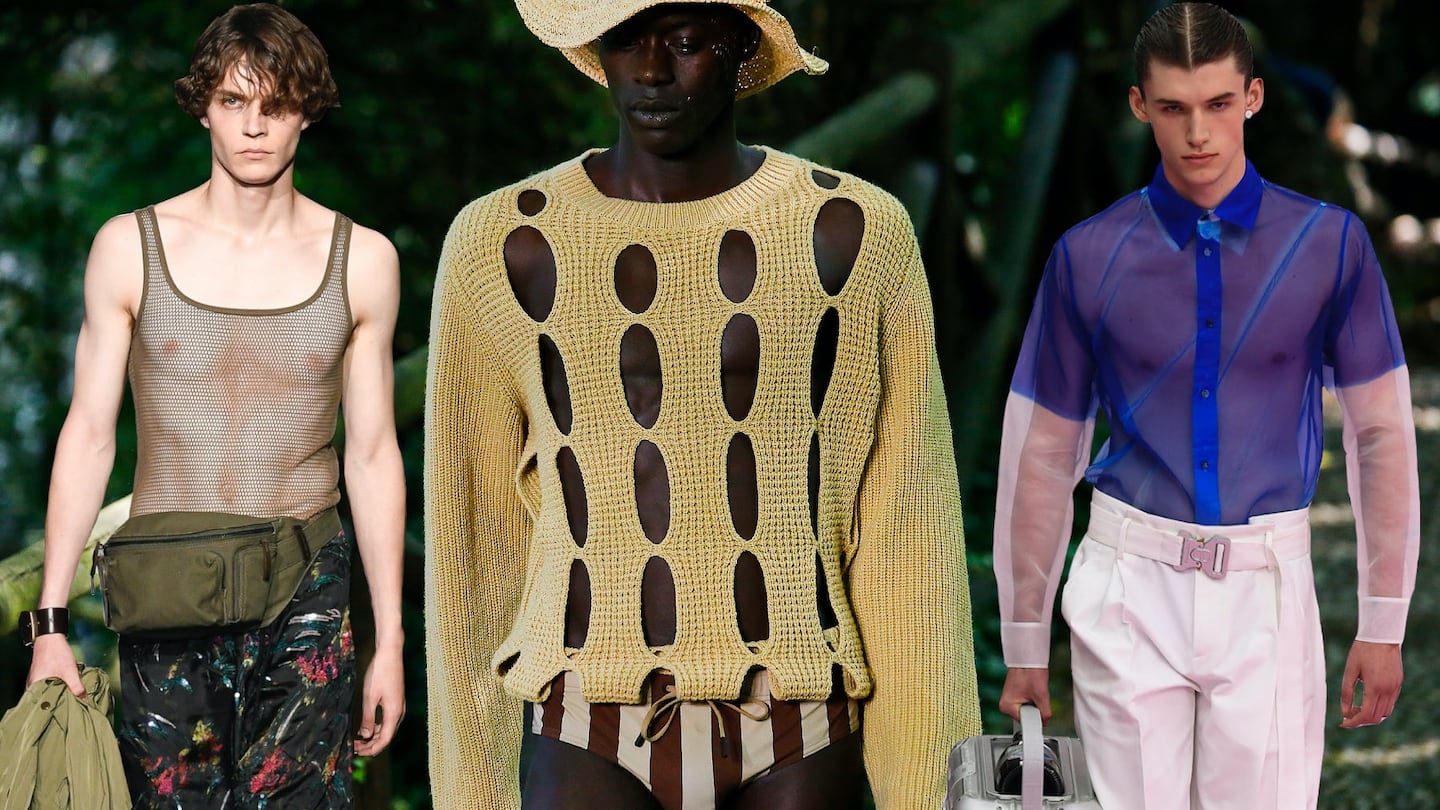
The Business of Fashion
Agenda-setting intelligence, analysis and advice for the global fashion community.

Agenda-setting intelligence, analysis and advice for the global fashion community.

TEL AVIV, Israel — The 2002 ad campaign for the men's fragrance M7 by Yves Saint Laurent was unforgettable. Featuring a black and white, full frontal nude photograph of a seated Samuel de Cubber, it was a first in the world of commercial fashion imagery and sparked quite a controversy. In fact, the offices of YSL allegedly received eight hundred letters of complaint, considered a large volume of consumer feedback in the pre-Facebook era.
But offensive or not, it was certainly bold and reflective of the rising metrosexual aesthetic. To be sure, YSL were not alone. Other campaigns and collections from the first decade of the 21st century — from Dolce & Gabbana's pubis-exposing jeans to Gucci's sheer men's underwear — channelled the rise of the hyper-sexualised man who wears body-con clothes for one purpose only: to show off what he has underneath.
Men have since covered themselves up. The gigolo of the previous area was buried under beards, khaki coloured chinos, buffalo-check flannel shirts and oversized sweatshirts. But the tides are changing. What started last year as the inevitable decline of sportswear-inspired fashion, has another current: men relating to their own bodies again as a tool of seduction.
While the world of womenswear is focused on body diversity and toning down objectification, menswear is celebrating a hyper-sexualised Adonis.
Net tops and sheer fabrics are taking centre stage in a large number of men's collections. For next summer, Dries Van Noten and Dsquared2 marched slender models down the runway in very see-through tank tops. Ditto Alexander McQueen, only in lace. At Emporio Armani and Louis Vuitton there were transparent shirts. Kim Jones of Dior Men took things even further with a white and translucent slim fitting overall. Fendi presented open knit sweaters and a fur cut-out jacket worn on the runway with nothing underneath. Even niche designers, who might have been seen as irrelevant three years ago, are gaining critical and commercial attention thanks to a bold approach to sexualising men: Ludovic de Saint Sernin, a fitting example, showed completely sheer suits that revealed a skimpy thong.
ADVERTISEMENT
The way clothes are being styled is changing as well. Not only are suits — at Balmain, Givenchy and elsewhere — being shown without shirting, exposing torsos in a way that had, in the past, been saved for femmes fatales (or 1980s party boys), but the cut of the designs is being reworked to emphasise what needs to be emphasised. Consider the body-con tops Saint Laurent showed in Los Angeles or Sies Marjan's short and stretchy combinaison that led the eye towards the crotch.
Of course, the kind of man who can sport that look is specific: young and well maintained. Ironically, while the world of womenswear is focused on body diversity and toning down objectification, menswear is celebrating a hyper-sexualised Adonis. This gap can be seen sharply in the Calvin Klein Underwear campaign that was released earlier this month. While the female models — from Naomi Campbell to Beth Ditto to Bella Hadid — reflect a wide range of ages and figures, their male companions are all toned, chiseled and under 40.
But it’s not just about fashion trends. Surveys show that men are spending more on their appearance. They are embracing masculine vitality and sharpening themselves physically. They are dressing up. Indeed, they are once again embodying that first, but oft forgotten, principle of fashion: that it was created to cover the body, only to expose it.
Liroy Choufan is a lecturer at Shenkar College of Engineering and Design and a fashion writer and researcher based in Tel Aviv.
The views expressed in Op-Ed pieces are those of the author and do not necessarily reflect the views of The Business of Fashion.
Related Articles:
[ Men Are Changing. Are Brands Keeping Up?Opens in new window ]
[ Op-Ed | Why the Plus-Size Revolution Will FailOpens in new window ]
From analysis of the global fashion and beauty industries to career and personal advice, BoF’s founder and CEO, Imran Amed, will be answering your questions on Sunday, February 18, 2024 during London Fashion Week.
The State of Fashion 2024 breaks down the 10 themes that will define the industry in the year ahead.
Imran Amed reviews the most important fashion stories of the year and shares his predictions on what this means for the industry in 2024.
After three days of inspiring talks, guests closed out BoF’s gathering for big thinkers with a black tie gala followed by an intimate performance from Rita Ora — guest starring Billy Porter.